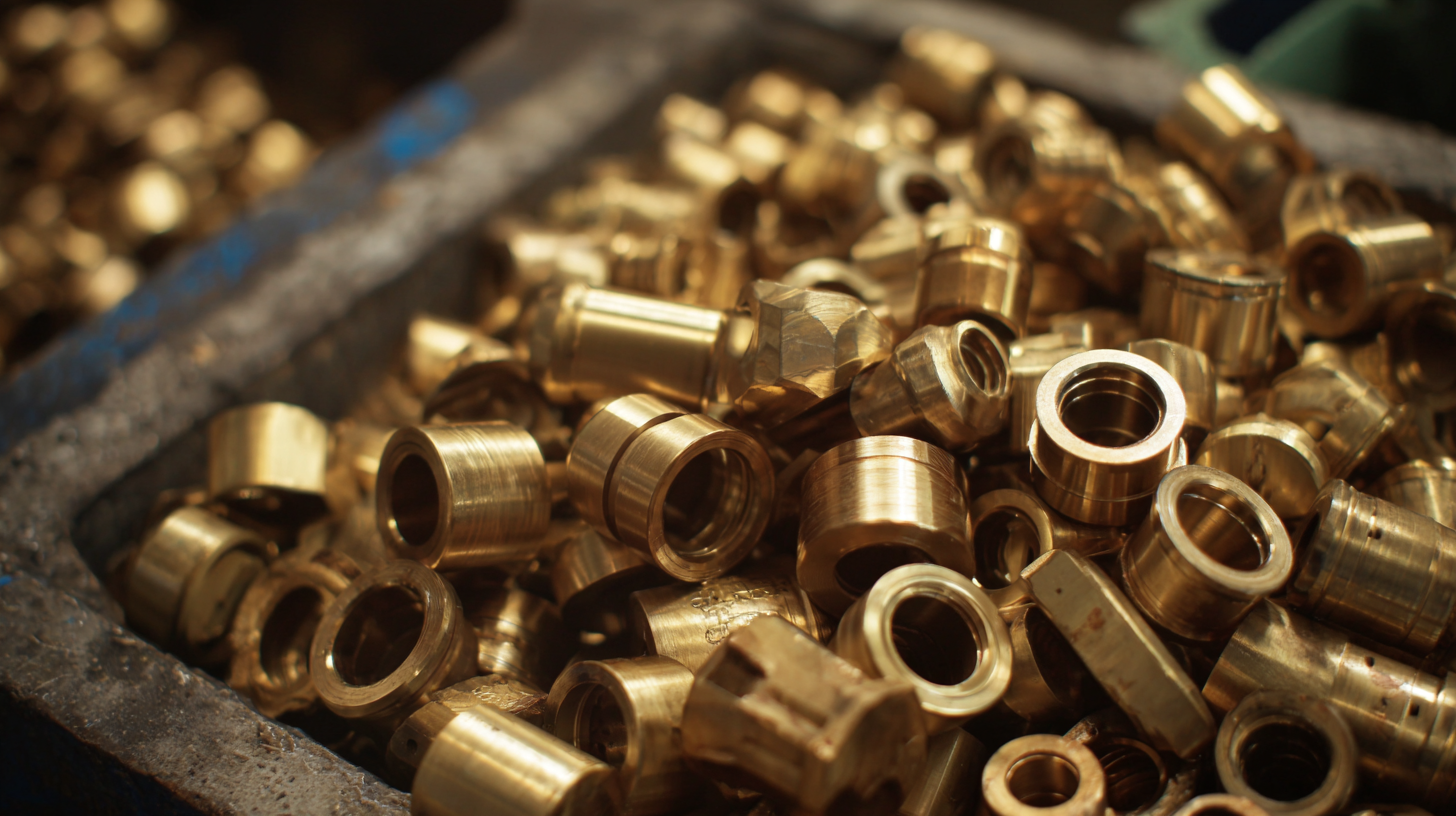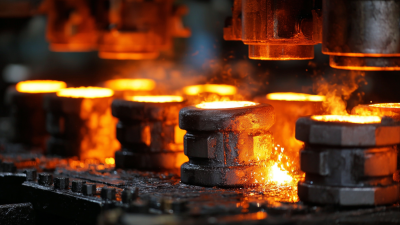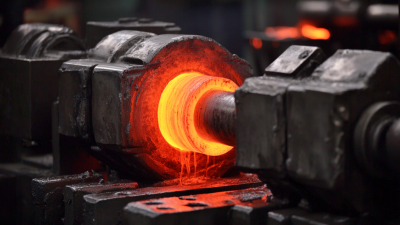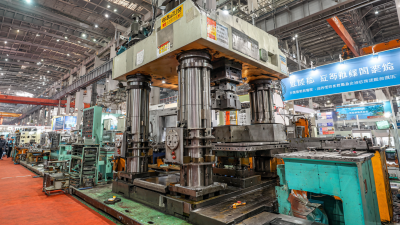Leave Your Message
-
Phone
-
E-mail
In the world of manufacturing, selecting the right materials is paramount to the success of any project. Brass forging parts, known for their versatility and strength, have become a favored choice among engineers and designers. As noted by industry expert Dr. Emily Turner, "The selection of brass forging parts can significantly enhance the durability and performance of your product, making informed choices essential." With the demand for high-quality components increasing, understanding how to choose the best brass forging parts is crucial for achieving optimal results.

This guide aims to provide you with insightful tips and considerations that will streamline your decision-making process. By examining the top five factors to consider when selecting brass forging parts, you'll be equipped to make choices that align with your project's goals. From assessing the specific requirements of your application to evaluating the manufacturers' capabilities, we delve deep into the critical aspects that define the integrity and effectiveness of brass components. As we progress through this guide, we will empower you with the knowledge necessary to navigate the complexities of choosing the best brass forging parts for your unique needs.
 When selecting brass forging parts for your projects in 2025, assessing material quality is paramount to ensure durability and performance. The first step is to understand the composition of the brass. Look for alloys that meet specific industry standards, such as ASTM or ISO, as these designations often indicate a reliable quality. High-quality brass generally contains a balance of copper and zinc, and some formulations may include additional elements to enhance specific properties like corrosion resistance or machinability.
When selecting brass forging parts for your projects in 2025, assessing material quality is paramount to ensure durability and performance. The first step is to understand the composition of the brass. Look for alloys that meet specific industry standards, such as ASTM or ISO, as these designations often indicate a reliable quality. High-quality brass generally contains a balance of copper and zinc, and some formulations may include additional elements to enhance specific properties like corrosion resistance or machinability.
Another critical factor in material quality assessment is the manufacturing process. Investigate the forging method used, whether it’s hot or cold forging, and how that impacts the final properties of the brass parts. Better forging methods typically produce parts with improved strength and less porosity, which leads to greater longevity. It's also advisable to request test certificates that demonstrate compliance with mechanical and physical property standards. By prioritizing these aspects, you can ensure that the brass forging parts selected for your projects are of the highest quality, capable of meeting the demands of your applications.
When selecting the right brass alloy for your project, it’s essential to consider the specific properties required for optimal performance. Different brass alloys offer varying levels of strength, corrosion resistance, and workability. For instance, if your project involves components exposed to harsh environments, opting for alloys with higher zinc content can enhance corrosion resistance. Conversely, for applications requiring high machinability, leaded brass alloys are ideal due to their ease of cutting and shaping.
Another key consideration is the mechanical properties of the alloy. Understanding factors such as tensile strength, malleability, and ductility can significantly affect the performance and longevity of the forged parts. It’s also crucial to evaluate the thermal and electrical conductivity of the brass alloys, especially for projects that involve electrical components. By aligning the material properties of the brass alloy with the operational demands of your project, you can ensure a successful outcome and enhance the overall quality of your forged parts.
This bar chart illustrates the percentage of different brass alloys preferred for forging projects based on their properties and applications.
Understanding the forging process is crucial for selecting the best brass forging parts for your projects. The global casting and forging market is projected to grow from USD 187.38 billion in 2025 to USD 260 billion by 2033, with a CAGR of 4.1%. This indicates a healthy demand for forged components, as industries increasingly rely on their durability and precision.

The cold forging machine market is also witnessing significant growth, anticipated to reach USD 37.3 billion by 2035, showcasing a remarkable CAGR of 5.4% between 2025 and 2035. This growth highlights the shift towards automated processes, which enhance efficiency and consistency in producing high-quality forged parts. Understanding these market trends can help you make informed decisions and ensure that the forged components you select meet the required standards for your projects, ultimately leading to better performance and longevity.
When comparing manufacturing techniques for brass parts—specifically casting and forging—it's essential to address the influence of additive manufacturing (AM) on these traditional methods. At first glance, casting may appear to hold its own against advancements in metal 3D printing, showcasing impressive capabilities in shaping complex designs with sophisticated microstructures. However, additive manufacturing is enhancing metal casting by allowing for rapid prototyping and design flexibility, enabling manufacturers to create intricate patterns that can lead to improved performance in the final casting produced.
Moreover, the advancement of AM technologies, such as the Cold Metal Transfer process, is boosting the mechanical properties and microstructures of materials like Ni-Al bronze. This synergy between AM and casting offers innovative solutions for industries requiring precise and high-quality components. As additive manufacturing continues to evolve, its applications in sectors such as jewelry and watchmaking reveal new prospects, making it imperative for manufacturers to consider how these technologies can complement and enhance traditional methods like casting and forging.
When selecting brass forging parts for your projects, evaluating supplier reliability is crucial for ensuring both quality and timely deliveries. A dependable supplier not only provides high-quality materials but also maintains consistency in production and support. Begin by researching suppliers’ track records; customer reviews and case studies can offer insights into their operational credibility and product standards. It’s advisable to seek suppliers with certifications, such as ISO 9001, which indicate adherence to quality management principles.
In addition to assessing product quality, understanding a supplier's delivery capabilities is essential. Engage in conversations to gauge their production timelines and inventory management practices. A reliable supplier should be transparent about lead times and possess contingency plans for unexpected delays. Building a relationship with a responsive and communicative supplier can significantly mitigate risks in your project timelines, ensuring that you receive your brass forging parts promptly and in excellent condition.






